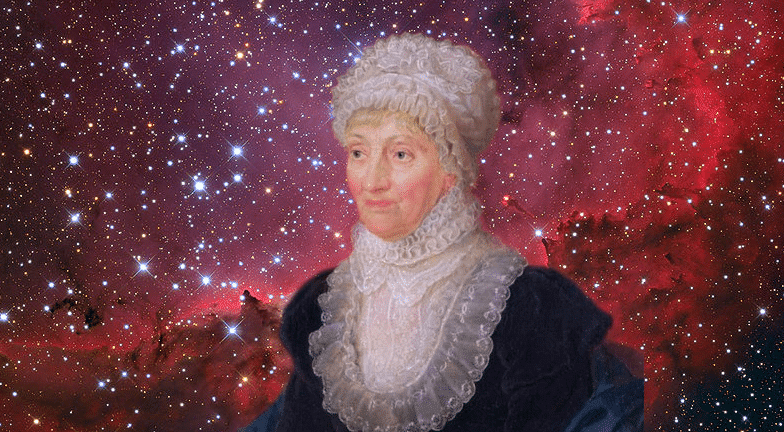Until the end of the nineteenth century, the few women who distinguished themselves in astronomy were always in the shadows of their husbands, fathers, or brothers. They could even make important contributions to science, but they were seen as mere helpers and hardly received recognition for their merits. An example of this phenomenon is the German-British Caroline Herschel, one of the greatest astronomers of her time, who took a long time to get acquainted with.
Caroline Lucretia Herschel was born in the German city of Hanover on March 16, 1750, into a family of musicians. At the age of 10, she contracted typhus, which also endangered her development and future.
Knowing that Caroline would not grow to great stature as an adult, her parents believed she would never marry. In fact, she never exceeded 1.30 meters and was never married, but not because of her height, but because she fell in love with a science: astronomy.
His brother, William Herschel, moved to England where he began making a living as a musician. and after her father’s death in 1772, Caroline went to live with William. There she took on household responsibilities, learned to sing and began to study astronomy, something William had also been interested in a few years earlier.
William worked as an organist and music teacher and his sister became a vocalist. But astronomy was gaining more and more space in the lives of William and Caroline. Together they built a telescope and began making regular observations of the night sky. It was the beginning of the end of two musicians’ careers and the birth of two of the greatest astronomers we’ve ever had.
Caroline recorded and organized observations made by her brother, made mathematical calculations from records, and also copied astronomical indexes that he had borrowed. They created a newsletter to publish the data recorded from these observations, and on March 13, 1781, William made a life-changing discovery.
He recognized a body that changed its position from one night to the next. At first, it was thought to be a comet, but later, it was realized that it is a planet outside the orbit of Saturn. William Herschel named it Georgium, after King George III, his patron. Later, the planet began to be called Uranus.
The discovery of Uranus led William to a post as Astronomer Royal at Slough Observatory and also represented a change of status for Caroline Herschel. Prior to this, she was seen as a minor aide to her brother, and later, she became William’s official assistant. It seems insignificant, but only since then did Caroline start getting paid for her work. Although the salary was not much, it was enough to make her the first known professional astronomer.
From then on, Caroline began making her own observations. During her free hours, she watched the sky with a small telescope, and with the help of this instrument she spotted many astronomical objects, among which was the neighboring elliptical galaxy M110 Andromeda.
In 1786, she also became the first woman to discover a comet, C/1786 P1 (Herschel), but she didn’t stop there. Until 1797, 8 comets were discovered, and in 5 of them Caroline was considered the main discoverer.
Caroline Herschel was also primarily responsible for revising the star catalog for John Flamsteed, England’s first Astronomer Royal. In addition to correcting the position of several stars, the catalog she presented to the Royal Society in 1798 included 560 other stars which had not been cataloged by Flamsteed.
In 1822, after the death of her brother William, she returned to Hanover, but continued to work as an astronomer. There she also occupied herself with the education of her nephew John Herschel, who also became an astronomer.
Even after brilliantly building her own course in astronomy, Caroline Herschel was always seen as an assistant to her brother. Even with William reporting that the two worked together, all the merits of their accomplishments belonged to him. Were it not for the discoveries made in his own observations, we might not even today know of his important contributions to astronomy.
Caroline lived in Hanover for the rest of her days, but received some recognition from the scientific community during her lifetime. She won a medal from the Astronomical Society of London for classifying nebulae discovered by her brother. She was one of the first women elected to the Royal Astronomical Society in England and became an honorary member of the Royal Irish Academy.
At the age of 96, she was also awarded the Gold Medal of Science, by the King of Prussia, in recognition of her “valuable services, discoveries, observations and calculations”.
Caroline Herschel died shortly thereafter, in 1848, at the age of 97, setting an example of a life devoted to science. Asteroid 281 Lucretia and crater Caroline Herschel on the Moon are named after him. And the short woman, Caroline Lucretia Herschel, became a giant in astronomy, an example to the world that science also has a place for a woman.

“Wannabe internet buff. Future teen idol. Hardcore zombie guru. Gamer. Avid creator. Entrepreneur. Bacon ninja.”

